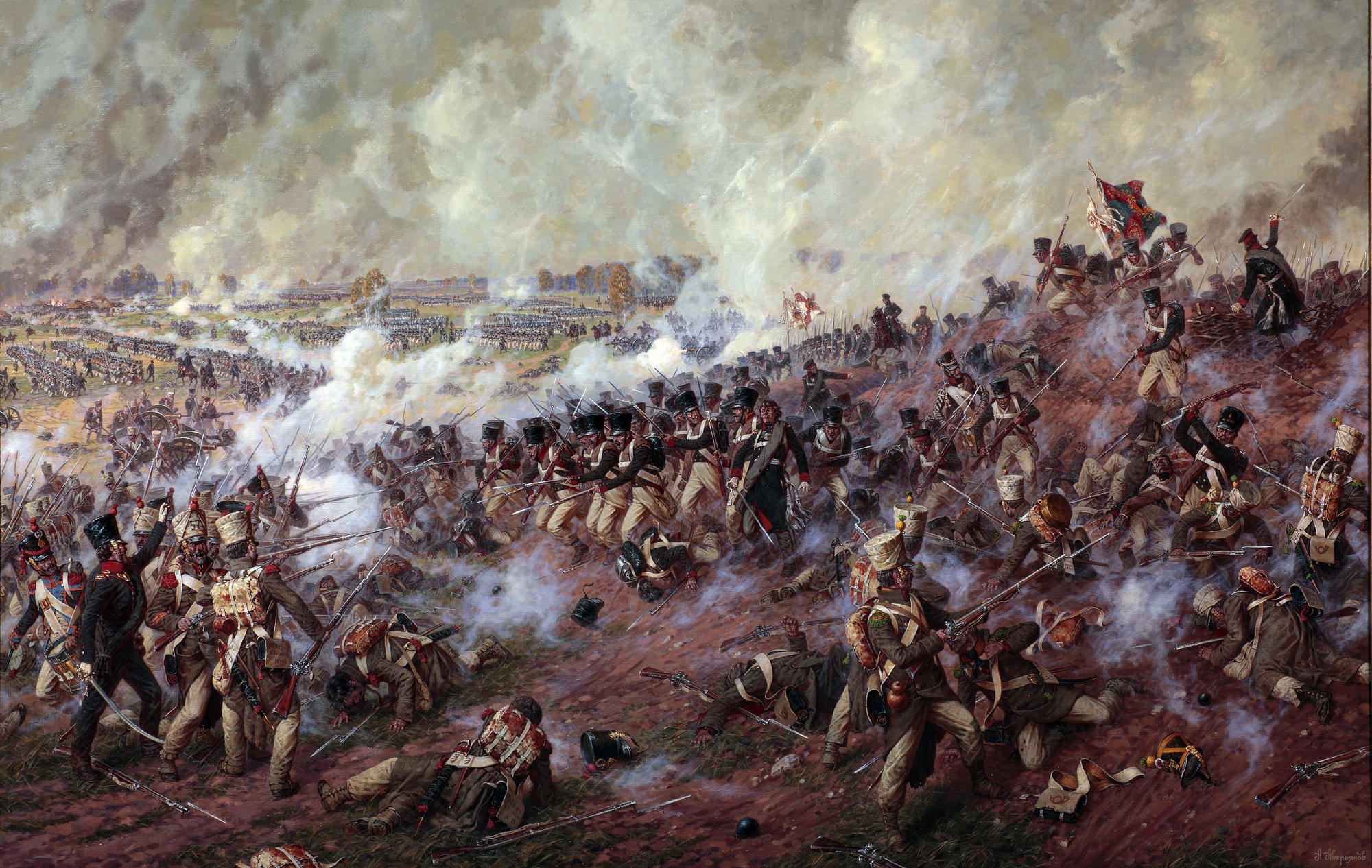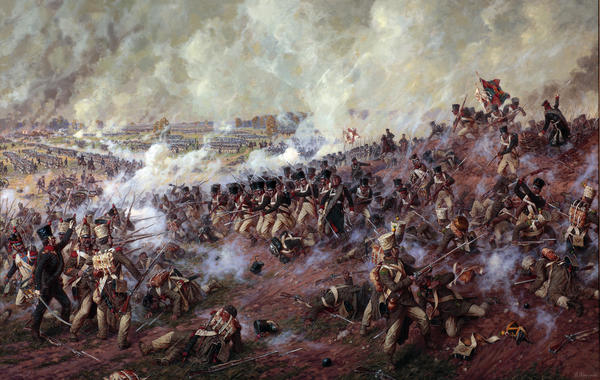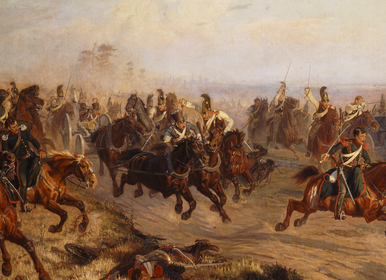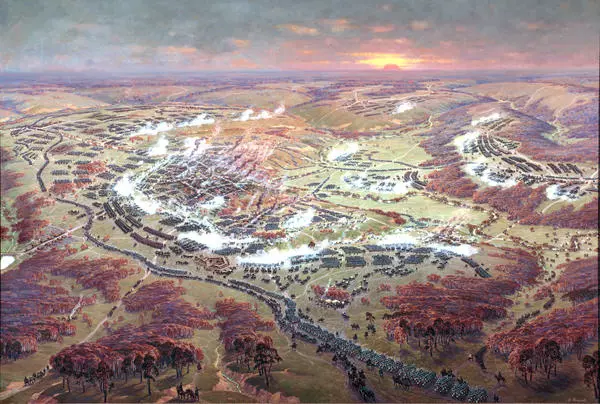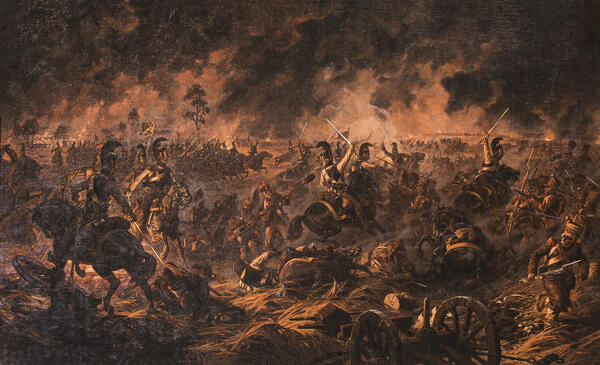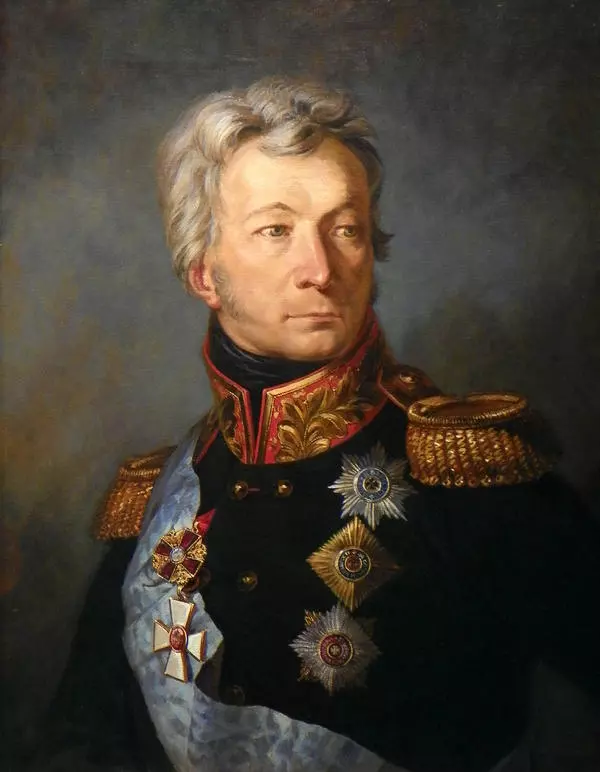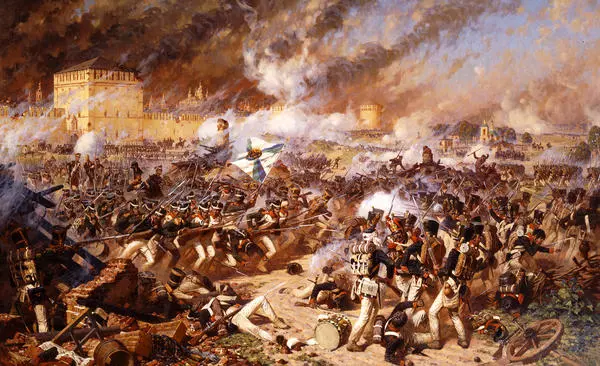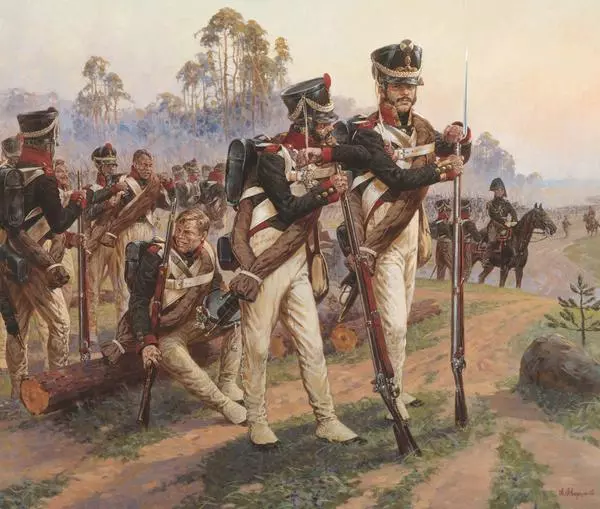Many historians believe that the Battle of Borodino lasted not two, but three days. In that case, one can consider the beginning of the battle to be August 24 (September 5, according to New Style), 1812, when the battle for the outworks of the Russian armies near the village of Shevardino took place.
At two o’clock in the afternoon, the forward forces of Napoleon’s army began to energetically force back the Russian advance guard. To enable the main forces of General Bagration’s army to move to new positions, it was necessary to hold the Shevardino Redoubt as long as possible.
The artist depicted the first attack of the French, which began at about five o’clock in the afternoon. Arriving at the Russian fortification, General Karl Loewenstern orders to start a bayonet assault. In the distance, Shevardino is already on fire — the village shared the sad fate of most of the settlements located on the Borodino field.
On the right, riding a horse is Loewenstern himself. Nearby, under the white-red banner, the Vilna Infantry Regiment is going into an attack. Along the hillside, ranks of the Simbirsk Infantry Regiment are rushing into a bayonet attack. Both of these regiments were part of the 2nd Brigade of the 27th Infantry Division, formed only at the beginning of 1812, on the very eve of the war.
Among the infantrymen of the Simbirsk Regiment there are soldiers in gray uniforms and forage caps instead of shakos. These are recruits – young soldiers. Still new to war, they had to immediately engage in a fierce battle with the French infantry, which was considered the best in Europe. The head of the division, Major General Dmitry Neverovsky, later wrote that when joining the Battle of Shevardino, ‘I had 6000 people in my command, but after I was left with three thousand’.
At the foot of the hill, the redoubt is secured with guns of the 23rd Company of the 12th Artillery Brigade of Lieutenant Colonel Yakov Sablin, and in the foreground are the enemy troops. The grenadiers of the French 57th Line Infantry Regiment, one of the best in the Grande Armée, can be distinguished by red pompoms on their shakos. Under the onslaught of the Simbirians, the Voltigeurs (fusiliers), with yellow-green pompoms on their shakos, are retreating.
At two o’clock in the afternoon, the forward forces of Napoleon’s army began to energetically force back the Russian advance guard. To enable the main forces of General Bagration’s army to move to new positions, it was necessary to hold the Shevardino Redoubt as long as possible.
The artist depicted the first attack of the French, which began at about five o’clock in the afternoon. Arriving at the Russian fortification, General Karl Loewenstern orders to start a bayonet assault. In the distance, Shevardino is already on fire — the village shared the sad fate of most of the settlements located on the Borodino field.
On the right, riding a horse is Loewenstern himself. Nearby, under the white-red banner, the Vilna Infantry Regiment is going into an attack. Along the hillside, ranks of the Simbirsk Infantry Regiment are rushing into a bayonet attack. Both of these regiments were part of the 2nd Brigade of the 27th Infantry Division, formed only at the beginning of 1812, on the very eve of the war.
Among the infantrymen of the Simbirsk Regiment there are soldiers in gray uniforms and forage caps instead of shakos. These are recruits – young soldiers. Still new to war, they had to immediately engage in a fierce battle with the French infantry, which was considered the best in Europe. The head of the division, Major General Dmitry Neverovsky, later wrote that when joining the Battle of Shevardino, ‘I had 6000 people in my command, but after I was left with three thousand’.
At the foot of the hill, the redoubt is secured with guns of the 23rd Company of the 12th Artillery Brigade of Lieutenant Colonel Yakov Sablin, and in the foreground are the enemy troops. The grenadiers of the French 57th Line Infantry Regiment, one of the best in the Grande Armée, can be distinguished by red pompoms on their shakos. Under the onslaught of the Simbirians, the Voltigeurs (fusiliers), with yellow-green pompoms on their shakos, are retreating.
